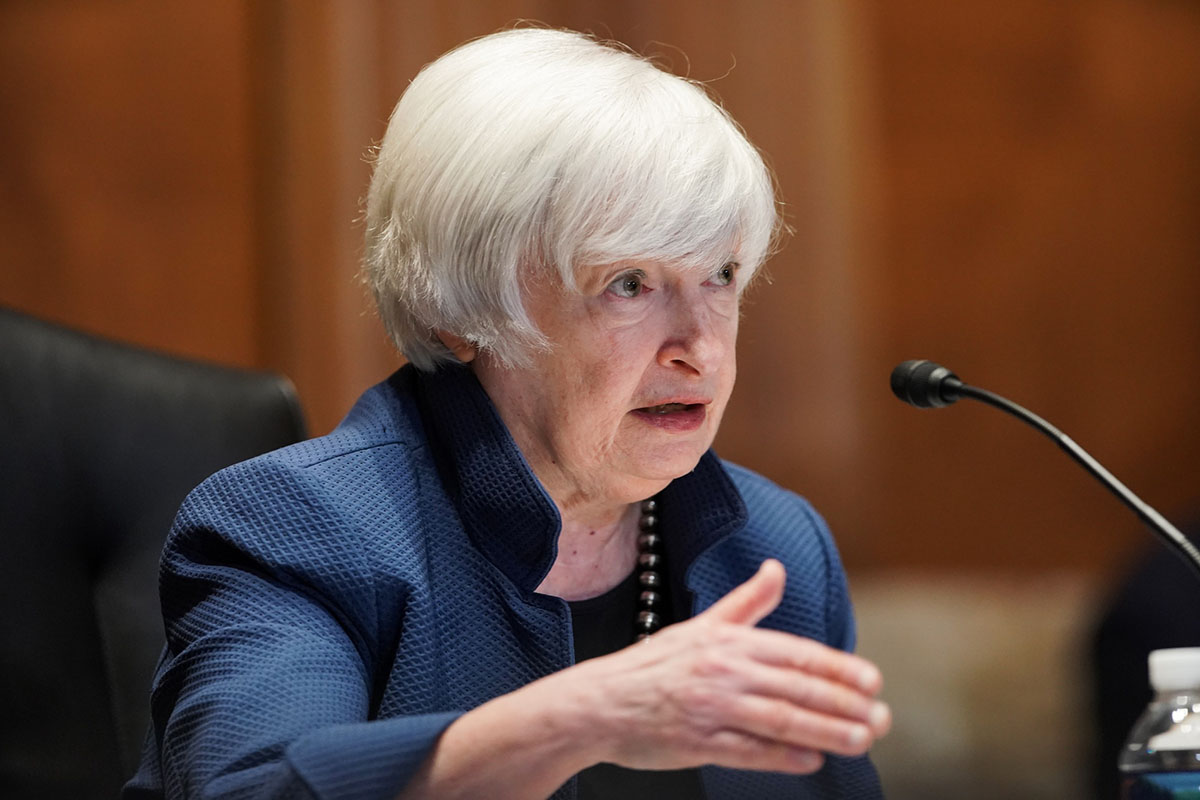

Finance
What Is The CMT Market Liquidity Rate?
Published: February 23, 2024
Learn about the CMT market liquidity rate in finance and its impact on financial markets. Understand how this rate affects investment decisions and market stability.
(Many of the links in this article redirect to a specific reviewed product. Your purchase of these products through affiliate links helps to generate commission for LiveWell, at no extra cost. Learn more)
Table of Contents
Introduction
Welcome to the world of finance, where numbers dance, and markets sway to the rhythm of liquidity. In this article, we delve into the intriguing realm of the CMT Market Liquidity Rate. Whether you're a seasoned investor, a curious student, or simply someone seeking to unravel the complexities of financial markets, understanding the CMT Market Liquidity Rate is pivotal.
The financial landscape is a dynamic ecosystem, where the flow of capital defines the tempo of transactions. Market liquidity, a cornerstone of this ecosystem, encapsulates the ease with which assets can be bought or sold without causing a significant change in their price. It's akin to the pulse of the market, reflecting the vibrancy and vitality of trading activities.
Amidst this backdrop, the CMT Market Liquidity Rate emerges as a critical metric, offering insights into the liquidity conditions within the financial markets. Its significance reverberates across various investment avenues, influencing decisions and strategies employed by market participants.
Join us as we unravel the intricacies of market liquidity, explore the significance of the CMT Market Liquidity Rate, dissect the factors influencing its fluctuations, and shed light on the methodologies employed to calculate this pivotal metric. By the end of this journey, you'll gain a comprehensive understanding of the CMT Market Liquidity Rate and its profound impact on the financial landscape. So, buckle up as we embark on this enlightening expedition into the heart of market liquidity and the enigmatic CMT Market Liquidity Rate.
Understanding Market Liquidity
Market liquidity serves as the lifeblood of financial systems, fostering seamless transactions and ensuring the efficient allocation of capital. At its core, liquidity represents the ease with which assets can be bought or sold in the market without significantly impacting their prices. This fluidity is essential for maintaining an orderly and functional marketplace, enabling investors to enter and exit positions with minimal friction.
One of the key dimensions of market liquidity is the concept of bid-ask spreads. This refers to the disparity between the prices at which buyers are willing to purchase a security (bid price) and the prices at which sellers are willing to part with it (ask price). A narrow bid-ask spread signifies robust liquidity, as it indicates that there is minimal divergence in the prices at which market participants are willing to trade.
Moreover, the depth of the market, which pertains to the volume of buy and sell orders at varying price levels, is a crucial determinant of liquidity. A deep market implies ample liquidity, as there is a substantial pool of orders that can be executed without significantly impacting prices. Conversely, a shallow market may exhibit higher price volatility, as a smaller volume of orders can lead to more pronounced price swings.
Understanding market liquidity also involves recognizing the distinction between primary and secondary markets. The primary market is where newly issued securities are made available for purchase, often through methods such as initial public offerings (IPOs). In contrast, the secondary market facilitates the trading of existing securities among investors, encompassing exchanges and over-the-counter platforms.
As investors navigate the intricate web of financial markets, comprehending the nuances of market liquidity becomes indispensable. The ebb and flow of liquidity can significantly influence investment decisions, risk management strategies, and overall market stability. Against this backdrop, the CMT Market Liquidity Rate emerges as a pivotal metric, offering valuable insights into the prevailing liquidity conditions and shaping the contours of investment landscapes.
The Importance of CMT Market Liquidity Rate
The CMT Market Liquidity Rate holds a position of paramount significance within the realm of finance, wielding influence that permeates investment decisions, risk assessments, and market dynamics. This metric serves as a barometer of market liquidity, offering invaluable insights into the ease of trading and the depth of the market. Understanding the importance of the CMT Market Liquidity Rate unveils its far-reaching implications and underscores its pivotal role in shaping financial landscapes.
For investors and market participants, the CMT Market Liquidity Rate serves as a vital gauge for assessing the ease with which assets can be bought or sold without causing substantial price movements. This insight is instrumental in devising trading strategies, optimizing portfolio allocations, and mitigating liquidity-related risks. By monitoring the fluctuations in the CMT Market Liquidity Rate, investors can adapt their approaches to align with prevailing market conditions, thereby enhancing their ability to execute trades efficiently.
Furthermore, financial institutions and regulatory bodies rely on the CMT Market Liquidity Rate to evaluate systemic risks and monitor the overall health of the financial markets. A robust understanding of market liquidity, facilitated by this metric, enables stakeholders to identify potential stress points, preempt liquidity crises, and institute measures to safeguard market stability.
From a broader economic perspective, the CMT Market Liquidity Rate plays a pivotal role in shaping monetary policy decisions and central bank interventions. By providing insights into the liquidity conditions across various asset classes, this metric informs policymakers about the efficacy of monetary measures and aids in fine-tuning policy frameworks to address liquidity concerns.
Moreover, the CMT Market Liquidity Rate serves as a crucial component in the assessment of market efficiency and the functioning of financial instruments. It offers a lens through which market participants can gauge the depth and resilience of liquidity, thereby fostering transparency and confidence in the marketplace.
In essence, the CMT Market Liquidity Rate stands as a linchpin in the intricate machinery of financial markets, permeating investment decisions, risk management strategies, and policy formulations. Its role in providing a comprehensive view of market liquidity underscores its indispensability and cements its status as a cornerstone metric in the realm of finance.
Factors Affecting CMT Market Liquidity Rate
The CMT Market Liquidity Rate, a pivotal metric in the financial landscape, is subject to the influence of multifaceted factors that collectively shape the liquidity dynamics within the market. Understanding these determinants unveils the intricate web of forces that can propel fluctuations in the CMT Market Liquidity Rate, thereby offering valuable insights into the underlying mechanisms governing market liquidity.
Market Depth and Trading Volume: The interplay between the depth of the market and the volume of trading activities exerts a profound impact on the CMT Market Liquidity Rate. A deep market, characterized by a substantial pool of buy and sell orders across varying price levels, tends to exhibit robust liquidity, thereby potentially yielding a lower CMT Market Liquidity Rate. Conversely, a shallow market with limited trading volume may experience liquidity constraints, leading to higher CMT Market Liquidity Rates.
Volatility and Economic Uncertainty: The prevalence of market volatility and economic uncertainty can significantly influence the CMT Market Liquidity Rate. Heightened volatility often corresponds to increased risk aversion among market participants, potentially constraining liquidity and contributing to elevated CMT Market Liquidity Rates. Economic uncertainty, stemming from factors such as geopolitical tensions or macroeconomic imbalances, can similarly impact liquidity conditions and manifest in fluctuations in the CMT Market Liquidity Rate.
Regulatory Policies and Market Structure: The regulatory environment and market structure play a pivotal role in shaping the CMT Market Liquidity Rate. Stringent regulations or structural impediments may impede the free flow of capital, thereby impacting market liquidity and reflecting in the CMT Market Liquidity Rate. Conversely, conducive regulatory frameworks and efficient market structures can foster vibrant liquidity conditions, potentially yielding lower CMT Market Liquidity Rates.
Asset-Specific Characteristics: The unique attributes of individual assets, such as their market depth, trading frequency, and investor demand, can exert varying influences on the CMT Market Liquidity Rate. Highly liquid assets, characterized by ample trading volume and narrow bid-ask spreads, may contribute to lower CMT Market Liquidity Rates, reflecting the ease of trading. Conversely, illiquid assets may exhibit higher CMT Market Liquidity Rates, signaling potential challenges in executing trades without impacting prices.
Technological Advancements and Trading Platforms: The evolution of trading technologies and the proliferation of electronic trading platforms have redefined the liquidity landscape. High-frequency trading, algorithmic strategies, and electronic market-making activities can influence the CMT Market Liquidity Rate by altering the speed and efficiency of trade executions. These technological advancements can introduce both opportunities and challenges, thereby shaping the liquidity dynamics and reflecting in the CMT Market Liquidity Rate.
By comprehending the intricate interplay of these factors, market participants can gain a nuanced understanding of the forces steering the CMT Market Liquidity Rate. This insight not only facilitates informed decision-making but also underscores the dynamic nature of market liquidity, encapsulating a confluence of influences that collectively shape the financial ecosystem.
Calculating CMT Market Liquidity Rate
The computation of the CMT Market Liquidity Rate involves a meticulous assessment of various liquidity metrics and market dynamics, culminating in a comprehensive portrayal of the prevailing liquidity conditions. While diverse methodologies exist for calculating this pivotal metric, a common approach entails the integration of key liquidity indicators to derive a holistic assessment of market liquidity.
Bid-Ask Spread: A fundamental component in the calculation of the CMT Market Liquidity Rate is the bid-ask spread, which reflects the disparity between the prices at which market participants are willing to buy and sell a security. A narrower bid-ask spread signifies robust liquidity, as it indicates minimal divergence in pricing and facilitates seamless trade executions. By aggregating bid-ask spread data across various securities, the CMT Market Liquidity Rate captures the overall liquidity landscape.
Trading Volume and Turnover Ratios: The volume of trading activities and turnover ratios also feature prominently in the calculation of the CMT Market Liquidity Rate. Ample trading volume and high turnover ratios often correlate with vibrant liquidity, signaling the ease with which assets can be bought or sold. By integrating these metrics into the calculation, the CMT Market Liquidity Rate encapsulates the depth and frequency of market transactions, offering insights into liquidity dynamics.
Market Depth and Order Book Analysis: Assessing the depth of the market and analyzing order book data forms an integral part of calculating the CMT Market Liquidity Rate. Market depth, which denotes the volume of buy and sell orders at varying price levels, provides a glimpse into the resilience of liquidity. Additionally, order book analysis offers insights into the distribution of pending orders, shedding light on potential liquidity constraints and market dynamics.
Volatility and Price Impact: The impact of market volatility and price movements on liquidity is a critical consideration in the calculation of the CMT Market Liquidity Rate. Heightened volatility and substantial price impacts may indicate liquidity challenges, potentially manifesting in higher CMT Market Liquidity Rates. By factoring in these elements, the metric reflects the influence of market dynamics on liquidity conditions.
Composite Liquidity Metrics: Integrating these individual liquidity indicators into a composite framework yields the CMT Market Liquidity Rate, offering a synthesized representation of market liquidity. This comprehensive metric serves as a valuable tool for investors, financial institutions, and regulatory bodies, providing a nuanced assessment of liquidity conditions and enabling informed decision-making.
It is important to note that the calculation of the CMT Market Liquidity Rate may vary across institutions and market participants, as different methodologies and data sources can influence the nuances of this metric. Nevertheless, the overarching objective remains consistent – to distill the complex web of liquidity dynamics into a singular, comprehensive gauge that encapsulates the vibrancy and resilience of market liquidity.
Conclusion
The enigmatic realm of market liquidity, intricately woven into the fabric of financial ecosystems, finds profound expression through the CMT Market Liquidity Rate. As we journeyed through the nuances of market liquidity, unraveled the significance of the CMT Market Liquidity Rate, dissected the factors shaping its fluctuations, and explored the methodologies employed in its calculation, a compelling narrative emerged – one that underscores the pivotal role of liquidity in shaping investment landscapes and market dynamics.
Market liquidity, akin to the lifeblood of financial systems, permeates every facet of investment activities, underpinning the efficiency and functionality of markets. The CMT Market Liquidity Rate, as a vanguard metric, offers a panoramic view of liquidity conditions, empowering investors, financial institutions, and regulatory bodies with invaluable insights into the ease of trading, depth of the market, and prevailing liquidity dynamics.
By comprehending the multifaceted factors influencing the CMT Market Liquidity Rate, market participants gain a nuanced understanding of the forces steering liquidity fluctuations. The interplay of market depth, trading volume, volatility, regulatory policies, and asset-specific characteristics collectively shapes the liquidity landscape, underscoring the dynamic and adaptive nature of market liquidity.
The calculation of the CMT Market Liquidity Rate, a meticulous synthesis of bid-ask spreads, trading volume, market depth, and volatility metrics, culminates in a comprehensive gauge that encapsulates the vibrancy and resilience of market liquidity. This metric serves as a beacon, guiding investment decisions, risk assessments, and policy formulations, thereby fostering transparency and confidence in the financial marketplace.
As we conclude this expedition into the heart of market liquidity and the profound significance of the CMT Market Liquidity Rate, it becomes evident that liquidity, far from being a mere technicality, is an omnipresent force that shapes the contours of financial landscapes. Its influence reverberates across asset classes, investment strategies, and policy frameworks, underscoring its indispensability in fostering vibrant and resilient markets.
Armed with a comprehensive understanding of the CMT Market Liquidity Rate and its far-reaching implications, market participants are poised to navigate the fluidity of financial ecosystems with acumen and insight. The pulse of market liquidity, encapsulated by this pivotal metric, continues to beat at the heart of financial markets, embodying the essence of resilience, adaptability, and efficiency.














